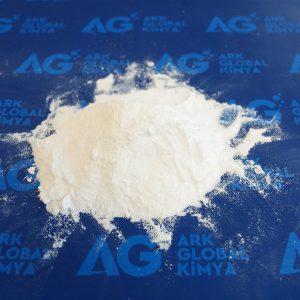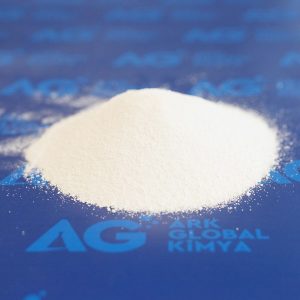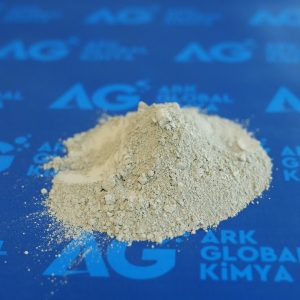What are the applications of Hydrogen Peroxide?
Hydrogen peroxide has various applications in different fields due to its strong oxidizing and disinfecting properties. Some of its common applications include:
Antiseptic use: It is used to clean and disinfect wounds and minor cuts. It helps prevent infection by killing microorganisms on the skin’s surface.
Bleaching agent: Hydrogen peroxide is commonly used as a bleaching agent for hair, teeth, and other materials. It is often used in the textile industry to bleach natural fibers like cotton, wool, and silk.
Water treatment: It is used in the treatment of wastewater and industrial effluents. Hydrogen peroxide helps in the removal of impurities and contaminants from water through oxidation processes.
Disinfectant: It is used as a disinfectant for various surfaces and objects. Hydrogen peroxide can effectively kill bacteria, viruses, and fungi, making it a useful disinfectant in household and industrial settings.
Chemical synthesis: It is used in various chemical synthesis reactions, such as the production of organic and inorganic chemicals. Hydrogen peroxide is a key component in the manufacture of various products, including propellants, polymers, and other specialty chemicals.
Cosmetic applications: It is used in various cosmetic products, including hair dyes, teeth whitening products, and skin care products, due to its bleaching and antimicrobial properties.
Agricultural use: It is used in agriculture as a disinfectant and to control the growth of algae and other microorganisms in water systems and agricultural equipment.
Rocketry: It is used as a propellant in rocketry due to its ability to decompose rapidly and release oxygen, which can be used as an oxidizer in rocket engines.
These applications demonstrate the versatility and importance of hydrogen peroxide in various industries and everyday use. However, it is important to handle and use hydrogen peroxide carefully, as it can be hazardous at high concentrations and may cause harm if not handled properly.
What are the factors that determine the quality of Hydrogen Peroxide?
The quality of hydrogen peroxide is determined by several factors that are critical for ensuring its purity, stability, and effectiveness in various applications. Some of the key factors that contribute to the quality of hydrogen peroxide include:
Purity: The purity of hydrogen peroxide is crucial in determining its quality. Impurities can affect its effectiveness and stability, leading to potential hazards and reduced performance in various applications. High-quality hydrogen peroxide should have a high degree of purity, with minimal impurities and contaminants.
Concentration: The concentration of hydrogen peroxide refers to the amount of the compound present in a specific solution. The concentration of hydrogen peroxide is a significant factor in determining its effectiveness in various applications. Different applications require different concentrations, and the concentration must be accurately measured and controlled to ensure optimal performance.
Stability: The stability of hydrogen peroxide is essential in determining its shelf life and effectiveness over time. Factors such as temperature, light exposure, and pH levels can impact the stability of hydrogen peroxide. High-quality hydrogen peroxide should have good stability, allowing it to maintain its potency and effectiveness over an extended period.
Acidity or pH level: The acidity or pH level of hydrogen peroxide is crucial in determining its reactivity and compatibility with other substances. The pH level can influence the effectiveness of hydrogen peroxide in various applications, and maintaining the appropriate pH level is essential for ensuring its stability and performance.
Manufacturing process: The manufacturing process of hydrogen peroxide plays a significant role in determining its quality. High-quality hydrogen peroxide is produced using reliable and well-controlled manufacturing processes that ensure consistency, purity, and quality in the final product.
Packaging and storage: Proper packaging and storage are essential for maintaining the quality of hydrogen peroxide. Suitable containers and storage conditions that protect the compound from external factors such as light, moisture, and contaminants are crucial in preserving its quality and effectiveness.
Considering these factors is essential in ensuring the production and use of high-quality hydrogen peroxide that meets the specific requirements of different applications and industries. Regular quality control measures and adherence to industry standards are necessary to maintain the quality and integrity of hydrogen peroxide throughout its production, storage, and use.
What should never be used with Hydrogen Peroxide?
While hydrogen peroxide has numerous applications and benefits, there are certain substances and materials that should never be used or mixed with it due to potential hazardous reactions. Some of the materials and substances that should not be used with hydrogen peroxide include:
Acetone: Mixing hydrogen peroxide with acetone can lead to a highly reactive and potentially explosive combination, posing significant safety risks.
Copper, Iron, and Other Transition Metals: Hydrogen peroxide can react with certain metals, such as copper and iron, leading to the formation of reactive oxygen species and potentially causing violent reactions or explosions.
Organic Compounds: Hydrogen peroxide can react with various organic compounds, such as fuels, oils, and some organic solvents, leading to potentially hazardous reactions and the risk of fire or explosions.
Alkalis and Strong Bases: Mixing hydrogen peroxide with strong bases or alkalis can lead to the generation of heat and potentially release oxygen gas, causing the mixture to boil or even explode.
Sulfuric Acid and Nitric Acid: Mixing hydrogen peroxide with strong acids like sulfuric acid or nitric acid can lead to highly exothermic reactions, which may cause the mixture to boil or even explode.
Ammonia: Mixing hydrogen peroxide with ammonia can lead to the formation of highly reactive and potentially explosive compounds, posing serious safety hazards.
Certain Metals and Metal Salts: Some metals and metal salts can act as catalysts in the decomposition of hydrogen peroxide, leading to rapid oxygen gas release and potentially hazardous reactions.
It is crucial to handle hydrogen peroxide with care and to avoid mixing it with incompatible substances to prevent accidents, chemical reactions, and potential hazards. Always follow safety guidelines and recommendations when using hydrogen peroxide to ensure safe and effective application.
How to store Hydrogen Peroxide?
Storing hydrogen peroxide properly is crucial to ensure its stability, effectiveness, and safety over time. Here are some guidelines for storing hydrogen peroxide:
Container selection: Store hydrogen peroxide in a tightly sealed, non-reactive container made of materials that are compatible with hydrogen peroxide, such as glass, stainless steel, or certain types of plastics. Make sure the container is clean, dry, and free of any contaminants.
Avoid light exposure: Hydrogen peroxide is sensitive to light, so it should be stored in a dark or opaque container to prevent degradation caused by exposure to light. Keep the container in a dark storage area or cover it with an opaque material to limit light exposure.
Temperature control: Store hydrogen peroxide at the recommended temperature to maintain its stability. Generally, it is best to store it in a cool, dry place at room temperature. Avoid exposing it to extreme temperatures or direct heat sources, as this can accelerate its decomposition.
Ventilation: Ensure that the storage area is well-ventilated to prevent the accumulation of any oxygen gas that may be released during decomposition. Adequate ventilation helps maintain a safe environment and prevents the buildup of pressure within the storage area.
Separation from incompatible substances: Store hydrogen peroxide away from heat sources, direct sunlight, and incompatible substances, such as strong acids, alkalis, organic materials, and reactive metals. Keep it in a dedicated storage area that is isolated from other chemicals to prevent potential reactions and hazards.
Labeling and handling instructions: Clearly label the container with the appropriate product information, including the concentration, expiration date, and any handling instructions or safety precautions. Make sure to follow all handling instructions and safety guidelines when storing and handling hydrogen peroxide.
Regular inspection: Regularly inspect the storage container and the surrounding area for any signs of leakage, damage, or deterioration. Check the container for any changes in color, odor, or consistency, and promptly address any issues to ensure the integrity of the stored hydrogen peroxide.
By following these storage guidelines, you can maintain the quality and effectiveness of hydrogen peroxide and minimize the risk of accidents or chemical reactions associated with improper storage.
What are the dangers of Hydrogen Peroxide?
While hydrogen peroxide has numerous uses and benefits, it can also pose certain risks and dangers, especially when mishandled or used improperly. Some of the potential dangers associated with hydrogen peroxide include:
Irritation and Burns: Direct contact with concentrated hydrogen peroxide can cause irritation, redness, and burns on the skin, eyes, and mucous membranes. Accidental spills or splashes may result in skin and eye irritation, leading to discomfort and potential injury.
Toxicity: Ingesting or inhaling high concentrations of hydrogen peroxide can be toxic and may lead to serious health issues, including irritation of the gastrointestinal tract, throat, and respiratory system. Ingesting large quantities can lead to severe burns and irritation in the digestive tract.
Reactivity with Certain Substances: Hydrogen peroxide can react violently or explosively when in contact with certain substances, such as flammable materials, organic compounds, metals, and strong acids or bases. Mixing hydrogen peroxide with incompatible substances can lead to hazardous chemical reactions and potential explosions.
Fire Hazard: Hydrogen peroxide can act as an oxidizing agent and may contribute to the combustion of flammable materials. It can increase the intensity of fires and may pose a fire hazard when stored or handled improperly, especially in the presence of combustible substances.
Decomposition and Pressure Buildup: Concentrated hydrogen peroxide can decompose over time, leading to the release of oxygen gas and the buildup of pressure within containers. Excessive pressure buildup can cause containers to rupture or explode, leading to potential hazards and safety risks.
Environmental Impact: Improper disposal of hydrogen peroxide can have harmful effects on the environment, as it can contribute to water pollution and may have adverse impacts on aquatic life and ecosystems. It is crucial to handle and dispose of hydrogen peroxide in accordance with environmental regulations and guidelines.
To minimize the risks associated with hydrogen peroxide, it is essential to handle, store, and use it in accordance with recommended safety guidelines and protocols. Using appropriate personal protective equipment, following proper handling procedures, and ensuring adequate ventilation are critical measures to reduce the potential dangers of hydrogen peroxide.
What does Hydrogen peroxide react with?
Hydrogen peroxide (H2O2) can react with various substances, resulting in different chemical reactions depending on the nature of the material involved. Some of the common reactions of hydrogen peroxide include:
Decomposition: Hydrogen peroxide can undergo spontaneous decomposition, particularly in the presence of certain catalysts or when exposed to heat or light. The decomposition of hydrogen peroxide results in the release of oxygen gas and water, which can be an exothermic process.
Oxidation: Hydrogen peroxide is a strong oxidizing agent and can oxidize various substances, including inorganic and organic compounds. It can react with certain metals, metal ions, and organic compounds, leading to the oxidation of these materials and the formation of various oxidation products.
Reduction: While hydrogen peroxide is primarily known for its oxidizing properties, it can also act as a weak reducing agent under specific conditions. It can participate in redox reactions with certain oxidizing agents, facilitating the reduction of these substances while itself undergoing oxidation.
Disinfection: Hydrogen peroxide can react with and destroy various microorganisms, such as bacteria, viruses, and fungi. It achieves this through oxidative reactions that disrupt the structure and function of essential cellular components, leading to the inactivation or destruction of the microorganisms.
Bleaching: Hydrogen peroxide can react with certain pigments and dyes, leading to the bleaching or decolorization of these substances. It is commonly used as a bleaching agent in various applications, including the bleaching of hair, teeth, and textiles.
Acid-Base Reactions: Hydrogen peroxide can react with strong acids or bases, resulting in acid-base reactions that may produce water and salts. These reactions can be exothermic, and they may generate heat and potentially release oxygen gas, depending on the specific reaction conditions.
Understanding the various reactions of hydrogen peroxide is important in controlling and harnessing its chemical properties for specific applications in industries such as healthcare, textiles, manufacturing, and environmental remediation. However, it is crucial to handle hydrogen peroxide with care and to avoid its interaction with incompatible substances to prevent hazardous reactions and potential safety risks.
What is hydrogen peroxide used for?
Hydrogen peroxide is used for a variety of purposes across different industries and applications due to its versatile properties. Some common uses of hydrogen peroxide include:
Disinfection and sterilization: It is used as a disinfectant and antiseptic agent to clean and disinfect wounds, cuts, and surfaces. Its strong oxidizing properties help destroy microorganisms, including bacteria, viruses, and fungi.
Bleaching agent: Hydrogen peroxide is used as a bleaching agent in various industries. It is commonly used for bleaching textiles, paper, and hair. In the textile industry, it is used to bleach natural fibers like cotton, wool, and silk.
Water treatment: Hydrogen peroxide is used in water treatment processes to remove impurities and contaminants. It helps in the oxidation of organic and inorganic substances, making it useful in the treatment of wastewater and industrial effluents.
Chemical synthesis: It is used as a reagent in various chemical synthesis processes, including the production of organic and inorganic chemicals. It serves as an oxidizing agent in the synthesis of certain compounds and materials.
Cosmetics and personal care: Hydrogen peroxide is used in various cosmetic products, such as hair dyes, teeth whitening products, and skin care products. It helps in bleaching and disinfecting purposes in these applications.
Rocket propulsion: It is used as a propellant in rocketry due to its ability to decompose rapidly and release oxygen gas. Hydrogen peroxide is used in some rocket engines as a monopropellant or as a component of bipropellant systems.
Agricultural applications: It is used in agriculture as a disinfectant and to control the growth of algae and other microorganisms in water systems and agricultural equipment.
Household uses: Hydrogen peroxide is used as a household cleaner for surfaces, floors, and various household items. It can effectively remove stains, disinfect, and deodorize various surfaces in the household.
These applications demonstrate the diverse uses and importance of hydrogen peroxide across various industries and everyday applications. However, it is essential to handle and use hydrogen peroxide with caution, following safety guidelines and instructions to prevent any potential hazards or risks associated with its use.
Is hydrogen peroxide safe on skin?
Hydrogen peroxide can be used safely on the skin in certain circumstances and at appropriate concentrations. It is commonly used as an antiseptic to clean and disinfect minor cuts, wounds, and abrasions. When used properly and at low concentrations, hydrogen peroxide can help prevent infections and promote the healing of minor skin injuries.
However, it is essential to use hydrogen peroxide with caution and follow the recommended guidelines to avoid any potential adverse effects. Some considerations for using hydrogen peroxide on the skin include:
Dilution: It is crucial to dilute hydrogen peroxide to a safe concentration before applying it to the skin. Using it at full strength or high concentrations can cause skin irritation and burns.
Application method: Apply hydrogen peroxide to the affected area using a clean cotton swab or gauze. Avoid excessive rubbing or applying it to large areas of the skin, as this can lead to irritation and damage to the skin.
Duration of application: Limit the duration of contact with the skin to the recommended time. Prolonged exposure to hydrogen peroxide can cause irritation and damage to the skin cells.
Rinsing and drying: After applying hydrogen peroxide, rinse the area thoroughly with water to remove any residue. Gently pat the skin dry with a clean towel to prevent further irritation.
Consultation with a healthcare professional: If you have any concerns about using hydrogen peroxide on your skin or if you have a significant or deep wound, it is advisable to consult a healthcare professional for guidance and appropriate treatment.
While hydrogen peroxide can be used safely on the skin for minor cuts and wounds, it is important to be cautious and use it as directed. Avoid using it on sensitive or damaged skin, and discontinue use if you experience any irritation, redness, or discomfort. If any adverse reactions occur, seek medical attention immediately.
How to decompose hydrogen peroxide?
Hydrogen peroxide (H2O2) can be decomposed through various methods, including the following:
Catalytic decomposition: One common method for decomposing hydrogen peroxide is through the use of a catalyst, such as manganese dioxide (MnO2). The catalyst provides a surface for the decomposition reaction to occur, facilitating the breakdown of hydrogen peroxide into water (H2O) and oxygen (O2) gas. This reaction is often used in commercial and industrial applications where controlled decomposition is required.
Thermal decomposition: Hydrogen peroxide can be decomposed into water and oxygen through the application of heat. Heating the hydrogen peroxide solution accelerates the decomposition reaction, leading to the release of oxygen gas and the formation of water vapor. Care must be taken to control the temperature and prevent overheating, which can lead to rapid and potentially hazardous decomposition.
Photolytic decomposition: Hydrogen peroxide can also be decomposed by exposure to ultraviolet (UV) light. The energy from the UV light promotes the breakdown of hydrogen peroxide molecules into water and oxygen. This method is used in some wastewater treatment processes and other applications where controlled photolytic decomposition is beneficial.
It is important to handle the decomposition of hydrogen peroxide with care, as the process can lead to the release of oxygen gas and an increase in temperature, potentially causing hazardous conditions. Proper safety precautions should be followed, and appropriate equipment and procedures should be used to ensure safe and controlled decomposition. Additionally, it is crucial to consider environmental and safety regulations when decomposing hydrogen peroxide to prevent any negative impacts on the environment or human health.








Reviews
There are no reviews yet.